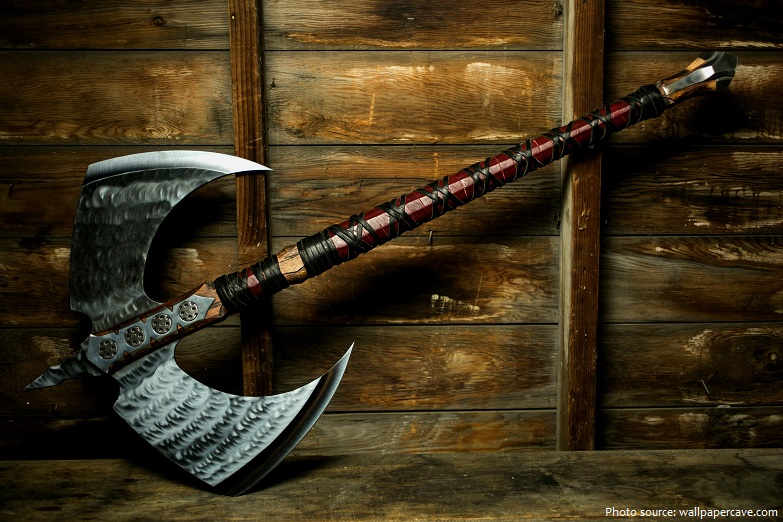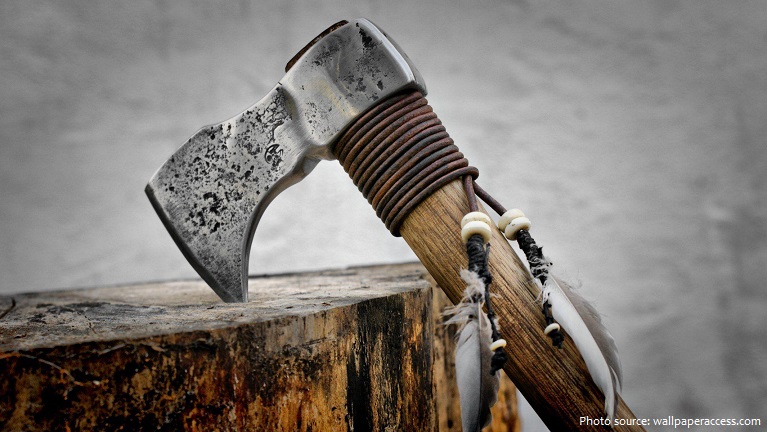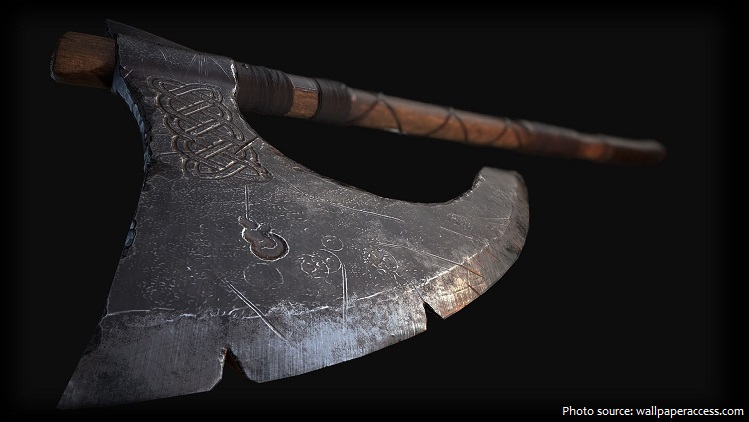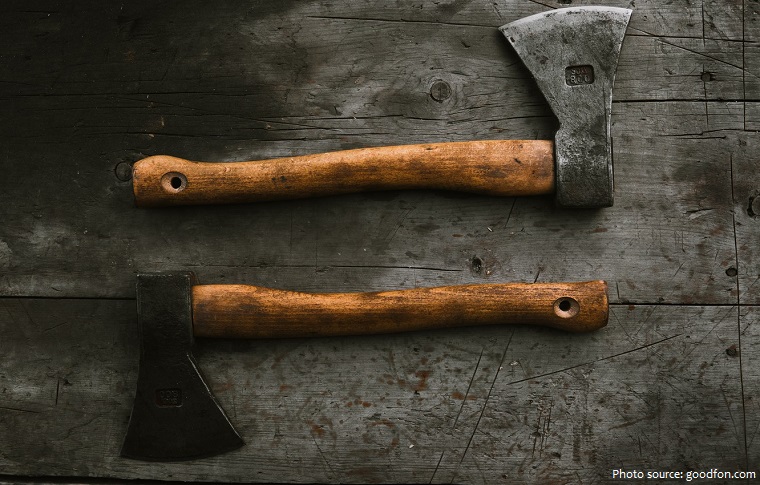
An axe sometimes ax in American English is a hand tool used for chopping, splitting, chipping, and piercing.
The axe is one of the oldest tools used by mankind. The oldest axes was known as hand axes.
Stone Age hand axes originated in simple stone implements that acquired wooden hafts, or handles, about 30,000 BC.
Copper-bladed axes appeared in Egypt about 4000 BC and were followed by axes with blades of bronze and eventually iron – blades were fastened to hafts by a variety of means — e.g., lashed into a wooden sleeve, bound into a split of wood, inserted in a bone socket.

The development of the iron-bladed felling ax in the Middle Ages made possible the vast forest clearance of northwestern Europe and the development of medieval agriculture. The ax played a similar role in land clearance in eastern Europe, Scandinavia, North and South America, and elsewhere.
In modern times the ax, now with a blade or bit of steel, sometimes double-bitted or sharpened on both ends, has lost much of its historic role to powered saws and other machinery, although it remains a widely used
tool with a wide variety of uses.

A battle axe is an axe specifically designed for combat. Battle axes were specialized versions of utility axes. Many were suitable for use in one hand, while others were larger and were deployed two-handed. Axes designed for warfare ranged in weight from just over 0.5 to 3 kg (1 to 7 lb), and in length from just over 30 cm (1 ft) to upwards of 150 cm (5 ft), as in the case of the Danish axe or the sparth axe. Cleaving weapons longer than 150 cm would arguably fall into the category of polearms.
A throwing axe is a weapon used from Antiquity to the Middle Ages by foot soldiers and occasionally by mounted soldiers. Usually, they are thrown in an overhand motion (much like throwing a baseball) in a manner that causes the axe to rotate as it travels through the air.

A tomahawk is a type of single-handed axe native to the many Indigenous peoples and nations of North America, traditionally resembling a hatchet with a straight shaft. The term came into the English language in the
17th century as an adaptation of the Powhatan (Virginian Algonquian) word. Tomahawks were general-purpose tools used by Native Americans and later the European colonials with whom they traded, and often employed as a hand-to-hand weapon. The metal tomahawk heads were originally based on a Royal Navy boarding axe and used as a trade-item with Native Americans for food and other provisions.
The Dane axe is an early type of battle axe, primarily used during the transition between the European Viking Age and early Middle Ages. Other names for the weapon include English long axe, Danish axe, and hafted axe.

Ono or masakari is the Japanese word for “axe”, and is used to describe various tools of similar structure. As with axes in other cultures, ono are sometimes employed as weapons. Many existing examples of this particular weapon are associated with the sōhei (warrior monks) or yamabushi, who also adapt other agricultural tools as weapons, although samurai are also pictured as using ono in woodblock prints. Ono that were specifically designed for military use are of extreme rarity. The weapon version of the ono is described as having “a very large head with a very convex cutting edge and a large scroll-shaped peen opposite it. It has a sheath covering only the edge of the blade. The entire length is nearly six feet”.
Carpenter’s axes or Carpenter’s hatchets are small axes, usually slightly larger than a hatchet, used in traditional woodwork, joinery and log-building. They have pronounced beards and finger notches to allow a
“choked” grip for precise control.

A cleaving axe or cleaver is a form of axe used within green woodworking to split wood lengthways. Cleaving (riving) is used to turn a log into lumber or billets (short or thick pieces of wood) into firewood. Splitting axe is sometimes described as an old name for a splitting maul or froe.
The tool was, according to Greek mythology, invented by Daedalus (the father of Icarus, who famously fell to his death when he flew too close to the sun with his wax-and-feather wings). Roman author and philosopher
Pliny the Elder wrote in his circa A.D. 79 book, Naturalis Historia, that Daedalus had invented carpentry “and with it the saw, axe, plumb-line, drill, glue, and isinglass.”

A steel axe 18.28 m (60 ft) long, 7 m (23 ft) wide and weighing 7 tonnes was designed and built by BID Ltd of Woodstock, New Brunswick, Canada. The axe was presented to the town of Nackawic, New Brunswick on 11 May 1991 to commemorate the towns selection as Forestry Capital of Canada for 1991. Calculations suggested it would take a 140-tonne (308,647 lb) lumberjack to swing the axe, but a crane was used to lift it into its concrete
stump.
The largest collection of axes consists of 606 items, and was achieved by Ján Pančura (Slovakia), in Ňagov, Prešovský Kraj, Slovakia, as verified on 5 May 2018.